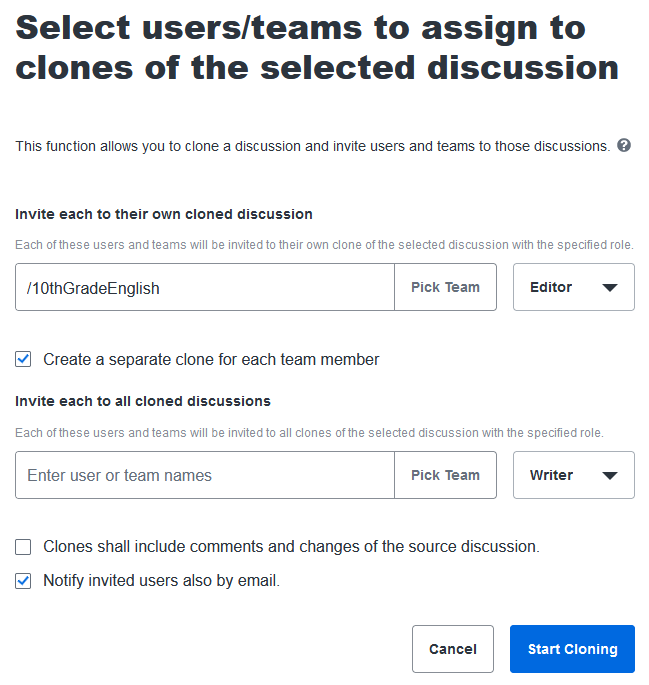Sample Assignment: Essay Outline
Explore this example of a student-created Kialo Edu discussion that outlines an essay on a civics topic.
Kialo Edu can help scaffold the writing process for your students. Students can use Kialo discussions to map out or outline ideas in preparation for a formal writing assignment. Using a Kialo discussion allows students to break down an argument into constituent claims and visualize how to develop that argument in an organized and concise manner. Students can also include counterarguments and rebuttals to have a complete picture of all the content that they will address in their essays.
Finally, you can comment on claims or use the Teacher Feedback feature to give students feedback on their ideas.
Learning objectives
Students will:
- Construct a clear thesis and generate main ideas to defend it.
- Organize supporting ideas into a coherent structure.
- Consider and rebut counterarguments.
- Explore logical connections between ideas to develop cogent arguments.
How do I get started?
- Log in or sign up for Kialo Edu.
- Create a blank template discussion by clicking on the Create Discussion button at the top right of the My Kialo page.

- In the discussion background, you can write specific instructions and include any useful links. You can also go back and edit this once the discussion is live.
- During the creation process, you can enable Tasks to ensure that students include an adequate number of ideas and sources in their outlines.
- Use the Clone and Invite Wizard to create a clone of the discussion for each student in your class.
Sample student instructions
Hello, students! Here are the instructions for your assignment:
Write an essay (1200-1800 words) defending your position on the prompt, “Should social media websites remove posts which spread misinformation?”
Before you begin writing, outline your ideas in this Kialo discussion by doing the following:
- Choose the position you want to take on the question, “Should social media websites remove posts which spread information?”
- Express your position in a thesis statement. Your thesis statement for the essay should be the thesis statement of your Kialo outline.
- Under the thesis, add “pro” claims that express the main ideas in support of your thesis.
- If, in your essay, you would like to dedicate a paragraph to rebutting a common counterargument to your position, you can add a “con” claim under the thesis that expresses the counterargument you’d like to rebut.
- Under your main ideas (the top-level claims), add “pro” claims that support the main ideas and “con” claims to both represent and rebut possible counterarguments.
- Remember to add sources to your claims! You do not need to add full citations to this outline, but I will be checking to see if you have added sources where necessary! Be sure to include at least 10 sourced claims.
To draft a complete outline, you should:
- Write at least 30 claims in total.
- Write at least 3 claims at the top level to represent your essay’s main ideas.
- Write at least 27 claims beneath the top-level claims (your main ideas).
- Include a source in at least 10 of your claims.
Sample essay outline created in Kialo
To open this sample discussion in a new tab, click here.
Licensing: This sample assignment is licensed under a Creative Commons Attribution-NonCommercial-ShareAlike 4.0 International License. You are free to edit and share this to your needs as long as the appropriate terms are followed.

